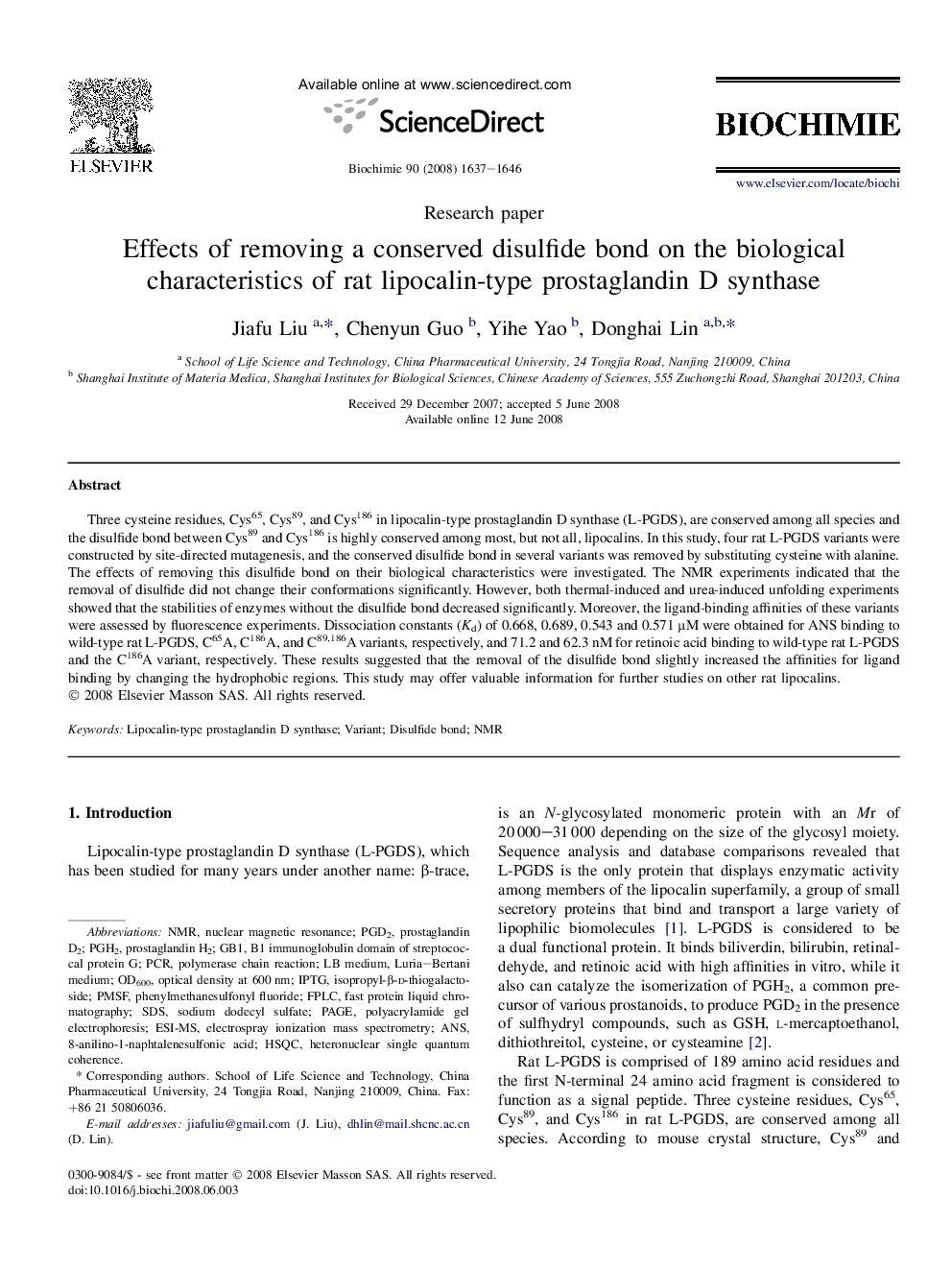| Article ID | Journal | Published Year | Pages | File Type |
|---|---|---|---|---|
| 1952664 | Biochimie | 2008 | 10 Pages |
Three cysteine residues, Cys65, Cys89, and Cys186 in lipocalin-type prostaglandin D synthase (L-PGDS), are conserved among all species and the disulfide bond between Cys89 and Cys186 is highly conserved among most, but not all, lipocalins. In this study, four rat L-PGDS variants were constructed by site-directed mutagenesis, and the conserved disulfide bond in several variants was removed by substituting cysteine with alanine. The effects of removing this disulfide bond on their biological characteristics were investigated. The NMR experiments indicated that the removal of disulfide did not change their conformations significantly. However, both thermal-induced and urea-induced unfolding experiments showed that the stabilities of enzymes without the disulfide bond decreased significantly. Moreover, the ligand-binding affinities of these variants were assessed by fluorescence experiments. Dissociation constants (Kd) of 0.668, 0.689, 0.543 and 0.571 μM were obtained for ANS binding to wild-type rat L-PGDS, C65A, C186A, and C89,186A variants, respectively, and 71.2 and 62.3 nM for retinoic acid binding to wild-type rat L-PGDS and the C186A variant, respectively. These results suggested that the removal of the disulfide bond slightly increased the affinities for ligand binding by changing the hydrophobic regions. This study may offer valuable information for further studies on other rat lipocalins.
